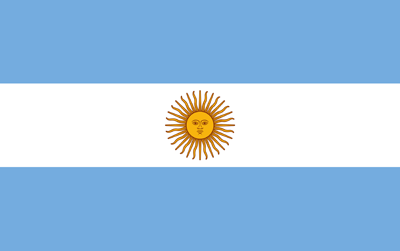Importing textiles can be a lucrative business, offering access to a wide variety of fabrics, home textiles, yarns, and garments from global suppliers. However, many international buyers focus solely on the product price, neglecting other costs that can significantly impact their overall budget. These hidden costs, if not planned for, can erode profit margins and create unexpected financial stress.
In this guide, we’ll explore five hidden costs international buyers often miss when importing textiles. We’ll also provide actionable tips to manage these costs efficiently, ensuring your import operations remain profitable and smooth.
1. Customs Duties and Import Taxes
When importing textiles, many buyers assume the quoted product price is all-inclusive. The truth is, customs duties, import taxes, and value-added taxes (VAT) can add up quickly.
Understanding Customs Duties
Every country has its own tariff schedule, which classifies textile products differently. Duties can vary based on:
- Product type (yarn, fabrics, home textiles, garments)
- Material composition (cotton, synthetic, blends)
- Country of origin
For example, importing cotton fabrics from Pakistan may attract a different tariff rate than importing polyester fabrics from India. Failing to account for these can drastically increase costs.
Additional Taxes
- VAT/GST: Applied on top of the customs duties in many countries.
- Excise Taxes: Some textiles, especially specialty fabrics or luxury goods, may have additional levies.
Tip for buyers: Always consult your country’s customs tariff schedule and calculate duties before confirming orders. Online calculators are available for preliminary estimates, but working with a licensed customs broker is the most reliable approach.

2. Shipping and Freight Charges
Shipping costs are another hidden expense that many buyers underestimate. International freight isn’t just about moving products from point A to point B. There are multiple components:
Types of Shipping Costs
- Freight Cost: Varies depending on shipping mode (air, sea, land) and shipment size. Air freight is faster but significantly more expensive than sea freight.
- Fuel Surcharges: Shipping companies add fuel cost fluctuations as surcharges, which can spike unexpectedly.
- Port Handling Fees: Loading, unloading, and port clearance fees at both the origin and destination ports.
Hidden Logistics Costs
- Container Loading and Unloading: Even if the shipment is consolidated, handling fees apply.
- Storage Charges: If customs clearance takes time, your shipment may incur storage fees at the port.
Tip for buyers: Request a freight-inclusive quote from suppliers or logistics providers to get a clearer picture of the total cost. Consider partnering with a freight forwarder who specializes in textiles, as they can negotiate better rates.
3. Quality Control and Inspection Costs
Textiles are prone to quality inconsistencies. Buyers often realize too late that they need to inspect shipments to ensure product quality.
Common Quality Control Challenges
- Variations in fabric weight, color, or weave
- Defective threads, holes, or inconsistencies in garments
- Packaging or labeling errors
Costs Involved
- Hiring a third-party quality inspection company at the origin country
- Additional labor charges if minor issues need correction
- Returns or re-shipment fees for defective batches
Tip for buyers: Always budget for pre-shipment inspections. Even if your supplier claims top-quality production, verification through a third-party inspection company prevents costly mistakes.
4. Currency Exchange and Payment Fees
International transactions expose buyers to currency risks and banking fees that can inflate costs unexpectedly.
Currency Fluctuation
- Textile suppliers often quote prices in USD, EUR, or other strong currencies.
- Between placing the order and making payment, exchange rates can shift, increasing your total cost in your local currency.
Bank & Payment Charges
- Wire transfer fees
- International transaction fees
- SWIFT/transfer intermediary charges
Tip for buyers: Consider using forward contracts to lock in exchange rates for large shipments. Also, negotiate with suppliers to include payment in your preferred currency or use platforms that reduce transfer fees.
5. Compliance, Certifications, and Regulatory Costs
Importing textiles isn’t just about purchasing products, regulations and compliance standards can introduce hidden costs.
Common Compliance Requirements
- Product Certifications: Organic cotton, OEKO-TEX, ISO compliance
- Labeling Requirements: Country of origin, material composition, care instructions
- Safety Standards: Flammability standards for home textiles or children’s garments
Associated Costs
- Paying for testing or certification verification
- Extra labeling or rework if standards aren’t met
- Possible fines or shipment rejections if compliance is ignored
Tip for buyers: Research your destination country’s textile import regulations in advance. Consider suppliers who already comply with international certifications to avoid extra costs.

Strategies to Reduce Hidden Costs
- Partner with Experienced Suppliers – Suppliers with export experience often help buyers navigate customs, certifications, and logistics efficiently.
- Consolidate Shipments – Instead of multiple small shipments, combine orders to reduce shipping, port, and handling costs.
- Use Third-Party Logistics Experts – Freight forwarders, customs brokers, and QC inspectors can save you from hidden fees and shipment delays.
- Plan for Currency Fluctuations – Always include a buffer in your budget to account for exchange rate changes.
- Negotiate Payment Terms – Suppliers may offer favorable terms (LC, open account) that can reduce immediate cash flow pressure.
Conclusion
International textile sourcing offers enormous opportunities, but it comes with hidden costs that many buyers underestimate. Customs duties, freight charges, quality inspections, currency risks, and compliance costs can collectively increase the total expense significantly.
By planning ahead, using experienced partners like Vigour Impex, and budgeting for these hidden costs, buyers can make smarter decisions, avoid surprises, and maintain healthy profit margins.
Remember: the cheapest product price rarely reflects the true cost of importing textiles. A well-informed buyer is a profitable buyer.
FAQs
Q1: How can I estimate customs duties before importing textiles?
A: Use your country’s tariff schedule or online duty calculators. Working with a licensed customs broker gives the most accurate estimates.
Q2: Should I choose air or sea freight for importing textiles?
A: Air freight is faster but costly, ideal for small or urgent shipments. Sea freight is cheaper for bulk imports but takes longer. Consider your budget and delivery timeline.
Q3: Is pre-shipment inspection necessary for all textile imports?
A: Yes, especially for bulk orders or high-value products. It prevents quality issues and reduces the risk of returns or rework.
Q4: How can I minimize currency exchange risks?
A: Use forward contracts to lock rates, negotiate payments in your preferred currency, or use low-fee international payment platforms.
Q5: What certifications should I look for when importing textiles?
A: Common certifications include OEKO-TEX, GOTS for organic cotton, ISO quality standards, and safety compliance certificates relevant to your market.







